#architecture médiévale
Explore tagged Tumblr posts
Text


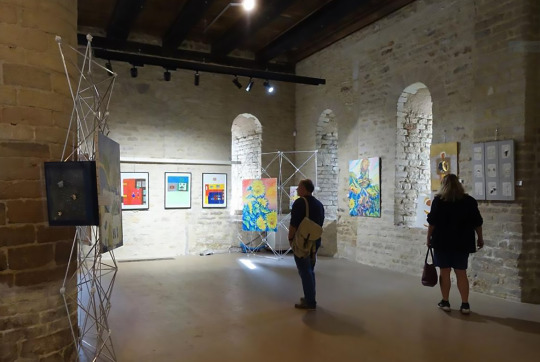
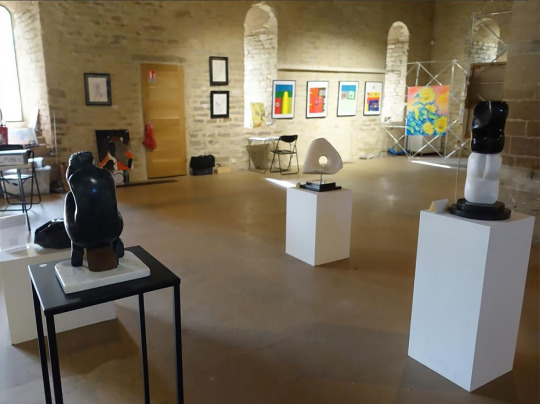


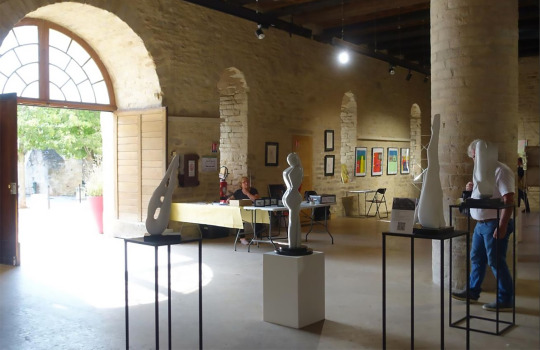
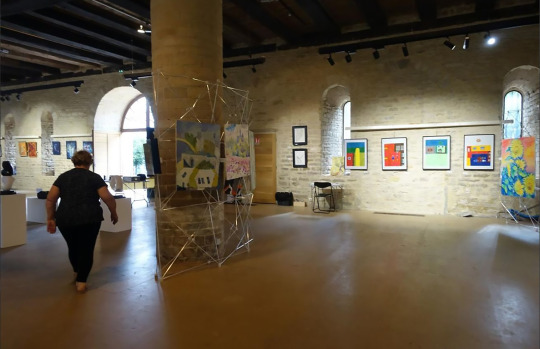
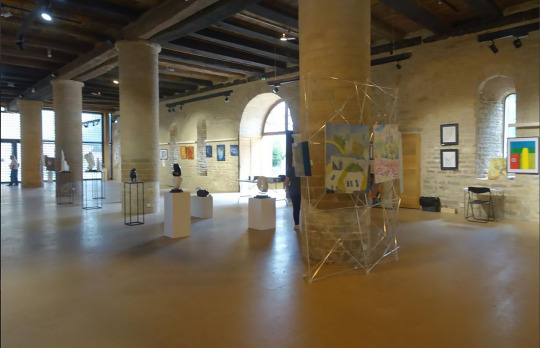

Ma première participation au salon international d'art contemporain ARTEC'CLUNY 2023 dans les écuries Saint-Hugues de l'abbaye de Cluny du 28 août au 10 septembre. Merci à ARTEC ART MONDIAL de me donner l'opportunité d'exposer dans de si beaux lieux ! 🙏
1 note
·
View note
Text







#façade#frontage#frontages#façades#architecture#medieval#médiéval#outside#dehors#colombage#colombages#half timbered#half-timbered#half timbering#half-timbering
4 notes
·
View notes
Text

#croquis#dessin#noir et blanc#bande dessinée#sketch#drawing#black and white#comics#artists on tumblr#ville médiévale#medieval town#rocamadour#occitanie#vieilles pierres#oldstones#architecture
5 notes
·
View notes
Video
Le fier donjon de Bonaguil par brigitte lagravaire Via Flickr : brigittephotos-fr.over-blog.com/2015/07/un-court-passage-... 2015-07-24-Bonaguil (73hc)
#Bonaguil#donjon#tour#Moyen-Age#médiéval#Fumel#promontoire#la bonne aiguille#la bonne eau#Aquitaine#Béranger de Roquefeuil#édifice#monument#architecture#France#Lot-et-Garonne#château fort#château#fortification#forteresse#vieilles pierres#rempart#BLALB#France Sud-Ouest#20150724#flickr
2 notes
·
View notes
Text
Troyes - la tour de l'orfèvre
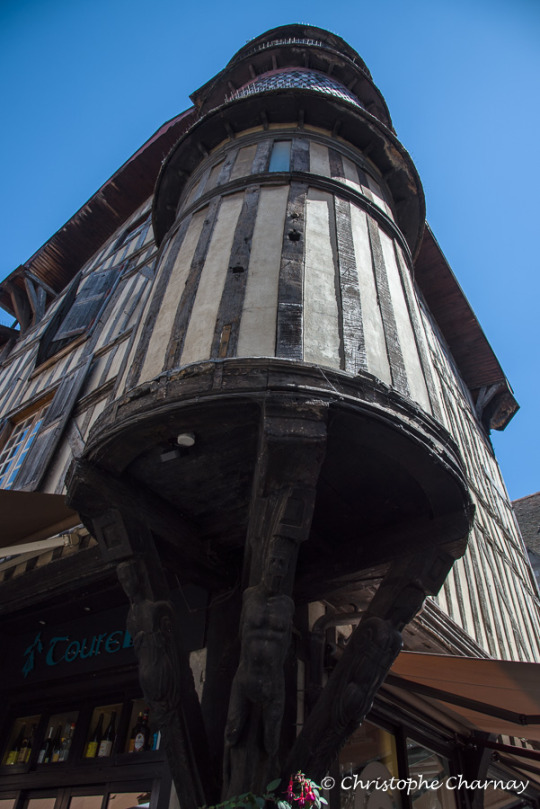
View On WordPress
0 notes
Note
Bonjour!!! Val, how are you?😊 saw your post about speak your language day and I found it very amazing cuz' it's always a great joy to celebrate and embrace our cultures and to know about each other's cultures 💞
So my question is: What is your favorite place to visit in France? Like a place that's very memorable to you.
Have a great day, Val😊!!
❤🧡
Bonsoir Kikarou 😊
Je vais très bien & j'espère que toi aussi ! J'ai eu du mal à choisir, même si je n'ai pas encore visité toutes les régions de France. C'est un beau pays, avec des paysages très variés, une architecture, une cuisine, un climat différents pour chaque région. Mer, montagne, plaine, il y en a pour tous les goûts.
English translation:
Good evening Kikarou 😊
I'm doing great & I hope you are as well I had a hard time choosing, even though I haven't visited all the regions of France yet. It is a beautiful country, with very varied landscapes ; architecture, cuisine, climate are very different in each region. Sea, mountain, plain, everyone can find a place to their liking.
>•< >•< >•< >•< >•<
Mon site préféré est Carcassonne, cité médiévale du sud-ouest
Je suis une passionnée d'histoire médiévale & j'adore les vieilles pierres, les ruines, les vestiges laissés par nos ancêtres. C'était à la fois une ville de commerce & une place forte. Le tour des remparts à pied est très long & épuisant mais vaut vraiment la peine, la vue est magnifique sur les plaines & montagnes alentour. Je pars passer trois jours là-bas ce jeudi, j'ai hâte de visiter la Cité de nouveau.
Petite anecdote : Carcassonne + Nördlingen & Burghausen (Allemagne) sont trois lieux réels qui ont inspiré le monde de L' Attaque des Titans !
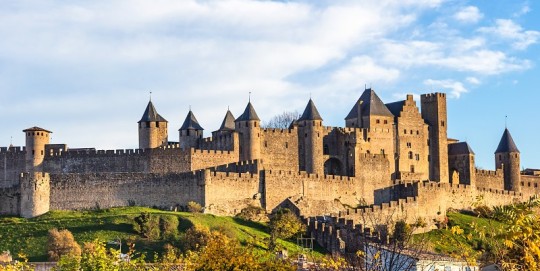

Deux autres sites que j'aime beaucoup aussi: le Mont-Blanc & Paris, bien sûr!
Merci beaucoup pour ton message !
😊🫶
>•< >•< >•< >•< >•<
English translation:
My favourite site is Carcassonne, a medieval city in the southwest
Medieval history is one of my passions & I love old buildings, ruins, vestiges left by our ancestors. It was both a trading town & a stronghold. Walking the fortifications on top of the walls is very long & exhausting but is definitely worth it, the view is magnificent over the surrounding plains and mountains. I'm going to spend three days there next Thursday, I can't wait to visit the City again.
Fun fact: Carcassonne + Nördlingen & Burghausen (Germany) are three real-life locations that inspired the world of Attack on Titan!
Two other places I like a lot as well: the Mont-Blanc & Paris, of course!
Thank you so much for sending an ask!
😊🫶
9 notes
·
View notes
Text

Derrière l’armure se dévoile tout un pan d’une histoire fortement ancrée dans notre patrimoine culturel, architectural, littéraire et cinématographique, une histoire inscrite dans nos imaginaires, aventure chevaleresque de l’Europe.. Devenir et être chevalier au Moyen Âge, qu’est-ce ? Que nous conte la geste médiévale, que nous chantent trouvères et troubadours de leurs exploits et de leurs idéaux ? Quel rapport entretient-il avec l’Église, quelle place a-t-il dans la société ? Le templier est-il meilleur que les autres ? Les chevaliers de la Table Ronde se ressemblent-ils tous ? Quelle est la part, aujourd’hui, entre histoire et fantasmes dans nos connaissances communes, nos stéréotypes, sur ce guerrier au heaume et à l’épée ?
3 notes
·
View notes
Text
Love in the French Middle Ages (1)
Here is a compilation of what I think is the most interesting or informative part of my French literatureXsocial science university class, centered around “Love, in all of its forms, in the French Middle Ages”.
# At the beginning of the class we had of course a reminder about what period of the world’s history is the Middle Ages, but I will place it back here because too many people still believe the Middle Ages are clear cut. The most common date associated with the beginning of the Middle Ages is 446, the fall of the Western Roman Empire, which marks the end of Antiquity. Most people choose this date because it marks at the same time the fall of a political regime AND the end of an entire culture. But in the same logic, others point out that the Middle-Ages began in France with the baptism of Clovis, which marked the end of the Roman domination in France and started a new, Christian era. Of course, the problem with pin-pointing exact dates for “historical eras”, is that it is impossible, since historical changes always take a long time. But the common ground is that with the fall of the Western Roman Empire, and the destruction of the Roman culture, the Middle-Ages began. For when the Middle-Ages ended, we also have several different dates. For some, it is when the Americas were “discovered”, in 1492. For others it is when Gutenberg invented the printing press in 1440, which modified forever humanity’s relationship to culture, literature and writing. For a third group yet, it is the fall of Constantinople, in 1453, and the end of the Eastern Roman Empire/Byzantine Empire. This date is notably chosen because with the fall of this Empire, all the Byzantine and Greek scholars fled to the West, which would cause the “rediscovery” of today’s “classics” of Antiquity, ushering forth the Renaissance. So the Middle-Ages is a VAST era. Roughly a thousand years old. For this class we didn’t focus on the Early Middle Ages (le Haut Moyen Âge in French), that went from 446 to the year 1000, the era of the Merovingians, Carolingians and Charlemagne. No we rather focused on the second half of the Middle Ages, “le Bas Moyen Âge”, the Late Middle Ages.
A quick reminder of why the Middle Ages are called “Middle”. It is because the Middle Ages, as a historical era, was ceonceived when it was other, it was retrospectively defined as an intermediary, in-between era going from Antiquity to the Renaissance. People only realized the “Middle Ages” existed when Renaissance began. With the Renaissance, there was a supposed “return of literature” and an “end to the Gothic darkness”, the humanists claimed the times preceeding them were barbarism and savagery - gothic savagery! It were the humanists that created the “dark legend” of the Middle-Ages. [Note: Interestingly, while today “Gothic” is an adjective designating a specific type of architecture, in the 16th century, during the Renaissance, “Gothic” didn’t meant this at all - it rather was an adjective related to the Goths, the Germanic tribes that invaded the Roman Empire at the end of Antiquity. So when humanists qualified the Middle-Ages of “gothic”, they meant “of the same savagery as those barbaric Goths that destroyed the glorious Roman Empire”, it was supposed to be a heavy caricature.] Hopefully, against this strong denigration, there was an idealization of the Middle Ages during the 19th century, notably by the Romantic and Royalist movements... but this resulted in a new backlash making in people’s mind the Middle Ages even more “barbaric” and “repulsive”. Even today, in the French language, there is a confusion between “médiéval” (the “medieval” adjective that means “belonging to the Middle Ages”) and “moyen âgeux”, “Middle Ages-like”, which is a derogatory term to designate something outdated, uncivilized or backwards. So today, there is a true effort by modern researchers and experts, by dedicated medievalists, to restore the actual Middle Ages into the mind of the people.
# Another fun fact: while today the “Renaissance” designates this historical era that starts roughly around the 16th century, there are actually other “Renaissances”... In the Middle-Ages! See, there is already a first Renaissance, called the “Carolingian Renaissance”, around the 800s. Charlemagne was ruling over a very vast empire, and under his rule there was a true boom of schools (not schools per se, but schools located in monasteries) - numerous schools were created, teachers and pupils were recruited left and right, lot of people learned how to read Latin and read the literature of the Antiquity (especially Cicero). This is why today in France you often hear “Charlemagne created school”. This educational movement was also tied to another intellectual movement focused on building up theology - and these two movements made the “Carolingian Renaissance”.
But there was another one, even more important! The Renaissance of the 12th century. People abandoned wooden castles for stone castles, for a better security. There was both a growth in population and in riches - and, of course, an intellectual growth too. It was the era of Chrétien de Troyes, and of Héloïse et Abélard, a couple part of the French literature history, well-known due to the letters they exchanged. Abélard was an intellectual, a scholar of the 12th century, who notably had numerous debates with another great name of the century, the monk Bernard de Clairvaux - and one of those debates was about the nature of love. Abélard was a truly typical Parisian clerc, and through his letters to Héloïse we discovered the history of their shared and passionate love (for example in one of Abélard’ letters, titled “Histoire de ma vie”, Story of my life, he explained to Héloïse where his passion for her was born, a passion so strong it caused troubles for him, since he is a clerc...).
[Note: The term “clerc” I use here is the French term for... *quick Google Search* cleric. In the medieval society, there was a three-part divide: the clercs, the nobles, and the others. The others were those that worked ; the noblesse were not those that worked, but those that made war - they were the warriors and the military group of the society. And the clercs were the clerics - clerc was a general denomination for all men of the Chuch, they were “those that pray”. The clergy notably had the monopoly of the institutional culture. In the 12th century there was a development of the university, and a boom in students - but this development was done under the rule of the clerics, these early university were “cathedral-schools” (opposed to the monastery-schools I talked about before), and all these students... were actually clercs! Because, remember, the society is divided between “those that work” and “those that don’t work”. The students don’t work (as in physical, manual labor), and since they don’t go off to war and aren’t noble, they are by default joined with the clerics. This is notably this intertwining of the clerics with studies that made it very difficult for women at the time to access knowledge.
Another point that explains why the 12th century was a “Renaissance”: it is noted that during this century, there was a renewed interest in the literature of the Antiquity. So the whole idea that “Antiquity was rediscovered by the 16th-century Renaissance” is false - people already knew and were interested by the literature of Antiquity during the Middle-Ages. What was rediscovered by the “proper” Renaissance was GREEK Antiquity, but already by the 12th century France had rediscovered the Latin Antiquity and its texts. Most notably, the poems and texts of Ovid, which all were heavily centered around love (his text “The Art of Love” was a best-seller in the 12th century). Most notably, Bernard de Chartres described this rediscovery of the literature of Antiquity is a very beautiful sentence: “Nous sommes comme des nains juchés sur les épaules de géants”. “We are but dwarfs on the shoulders of giants”.
# What truly defined the Renaissance in France was many other things than this misplaced “rediscovery of Latin”. It was the era of the “Great Discoveries” and world-travels ; it was an era where the French language was praised, worked on and spread (against the “dead languages” that were the Greek and Latin) ; and it was also the time of the religious wars. This last point is very interesting: the Renaissance was a time where Christianity split itself in two and knew a nasty civil war, between Catholics and Protestants. But the medieval society was fully and completely united in its Christianity - in France, beyond Christianity, there were only the Jews, but they were a minority either oppressed, either forced into exile. Another reversal of ideas: there are a lot of things we think of as “Middle-Ages-like” that were actually still existing by the Renaissance. Saint-Eustache, one of the Gothic churches of France, was built in 1536. Henry II died in a medieval-like tournament, despite being a 16th century man.
No, what truly defined the Renaissance was the humanism. In the Middle Ages we had the Petrarquism, following Petrarca, this time of sonnet-based poetry that marked Europe so much that the Pléiade herself (a famous group of poets of the French Renaissance) wanted to return to the Petrarquism. Petrarca’s greatest ork was “Canzioniere”, a work in “vulgar language”. One should remember that until quite recently, any language that wasn’t Latin or Greek was “vulgar language”, and Canzioniere was written in the Toscan dialect. And the Canzioniere was a series of poems all consecrated to Laura, a girl he knew in the town of Avignon, and who died - the Canzioniere is an attempt at maintaining this love even after the loved one’s death, and they gather what was called “erotic poems” (actually romance poetry) and “mystical poems” (religious poetry). Petrarca hoever had a role to play in the rise of humanism: Petrarca wanted to write in Latin to imitate Cicero, he had a great love for the literature of Antiquity and its authors. Petrarca was a leader in the desire to find back the lost or forgotten texts of Antiquity, and he was one of the first to put together the “method” of understanding these texts for what they were, for what they actually meant to say, with the consciousness that many things are separating the “present day” reader from the text of the past - he was one of the “founders” of the “historical consciousness” as we would put it today. This was a VERY important thing because in the Middle Ages the “consciousness of the Antiquity” was lost, or modified beyond anything recognizable. The medieval scholars never thought about the historical or social differences that separated them from the texts of Antiquity - and they judged these texts with the same criteria, concepts and principles they used to judge and criticize their contemporaries. Humanism brought forward the idea that Antiquity was over, was a “time of the past”, not just a continuation of “today”.
# Random fact: At the time of Petrarca, university only taught three different subjects. Theology, the law, and medecine. That was it, there was nothing else at the university.
# But let’s put aside all this context about the Middle Ages. Let’s start talking about the thing we are here for... love. Precisely “L’amour courtois” - Courtly love. And by extension, La littérature courtoise, Courtly literature.
There is a common saying that claims “Love was invented in France in the 12th century”. This is false because there was a love literature long before the 12th century. Courtly love was quite similar to a “fashion” or a “fad”. There were rules, though they had never been written anywhere, nor clearly spelled out by anyone - and these rules were idealized through the medium of literature. And this courtly love was actually about the coexistence of two different loves. There was the “common” love shared by everyone and that was thought to be natural at the time: the love for God. But this love, in the courtly literature, had to co-exist with a new love: the love for the lady (never for the wife!), a type of love specifically created for the nobility. This is what we call courtly love, “amour courtois” in French, though “amour courtois” is a 19th century term created by Gaston Paris. To avoid anachronism, the correct term, proper for the Middle Ages, would be “fin’amor”. The adjective “courtly” was used for people (those that felt or worked for the courtly love), but also for concepts. For example, the concept of moderation - a person feeling a courtly love must contain themselves. It is also tied to the “joven”, the youth - but interestingly this “joven” isn’t tied so much to actual physical age, than to “the ability to give yourself to someone else, and to sacrifice yourself for someone else”. This courtly love could work in one of two ways (often complementary): either it was thought that this type of love was only aimed at or “deserved by” courtly people ; either it was thought that by feeling this type of love, people “became” courtly themselves.
The term “courtois” in French doesn’t mean just “courtly” but also “courteous” or “mannerly”, and the associated name, “courtoisie”, would be translated in English by “courtesy”, though this medieval “courtesy” or “courtliness” was based on social codes VERY different from our modern social codes. Of course, you noted it, “courtesy”, “courtliness” comes from “court”, “la cour” in French: this social phenomenon was born, before all, inside courts. The courtly literature was tied to the princely courts, it was tied to the nobility and expressed the ideals of the nobility. But ideals which were also tied to the clergy - because upon seeing the huge popularity of this literature among the nobles, the clerics of course jumped in. And why were they worried about it? Because this courtly love, and this courtly literature, was invented at the court, shared by nobles and clerics... but it was a pure invention of the nobility, that is to say the secular part of the court, the “laïc” part as we call it in French, with no involvment whatsoever of the clergy. [Of course, the masses, the workers, were not at all concerned by the courtly literature, and had no dealing with it. The only type of literature that belonged to the masses was “les fabliaux”].
Courtly love is actually born in southern France, and then moved up to the north. One of the early heralds of courtly love was Guillaume d’Aquitaine, one of the first “poet-lords”. He welcomed in his courts numerous troubadours, including the now famous Jaufré Rudel. A troubadour was a professional singer and poet, always of the noble class (female troubadours, like Marie de Ventadour, were called trobairitz). This fashion of courtly love then spread to the north (if you do not know, during this era France was divided in North and South, not just by the politics and culture, but also by the very language - Southern France spoke the “langue d’oc”, the language of oc, while the North spoke the “langue d’oïl”, and modern French is a descendant of the northern dialect, which “won” against the southern one). An example of how this southern fashion went to the north: the duchess of Aquitaine, Aliénor d’Aquitaine, married her daughters to several lords of the north. Most notably, one of her daughters sent north was Marie de Champagne, who brought all sorts of clerics and scholars to her court, and it is for her that Chrétien de Troyes dedicated his novels. A second “travel” of the courtly love, and the last, was a travel from France to Sicily - which at the time was under the rule of the Anjou dynasty. So in the 13th century Sicily, a form of poetry very similar to the continental courtly love was adopted - and this Sicilian poetry (remember, Sicily was where Petrarca’s poetry was born) influenced and inspired numerous authors located north of Italy, especially Tuscany authors, including a certain... Dante. [What is also very interesting is that in Italy at the time there wasn’t the same system of princely courts as in France, and as a result, by reaching Italy, the courtly love actually managed to “break free” from the courts]
# Why is love so important in this era? Why did love became the subject of all philosophers, and the center of various ideologies? Because at the time, Christianity had decided to put love at the heart of its thoughts and discussions. In this era, the religious commandements were “re-organized” and given a new hierarchy, with the one coming at the top being “You shall love God and your neighbor”. This resulted, for the Middle Ages, into love becoming an ideal. Love was present in all four of the Gospels, “God is love”, “Love stays beyond death”, etc... But with this very strong idealization, there was a lack. All the speeches, all the discourses about love, were about the clerics. The monk was seen as the model-life, as the living example of love. Due to this religion-focused thinking, the secular world lacked any true “example” of love - this whole love discourse didn’t “plan” for the secular people to participate in this “divine love”.
#french middles ages#notes from university#middle ages#medieval love#courtly love#french literature#medieval literature#french history
29 notes
·
View notes
Photo
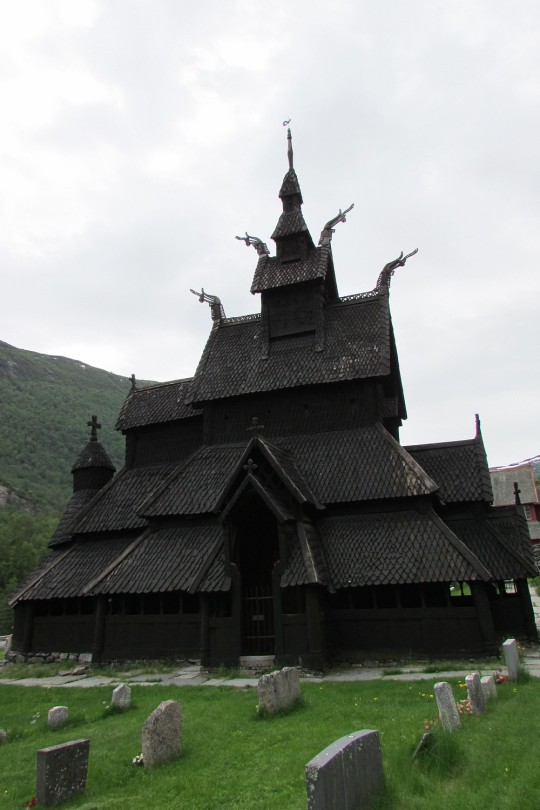
Les Stavkirke de Norvège: un trésor national
Les églises à piliers de bois (ou stavkirke), admirées pour leur architecture unique et leurs décors magnifiques, comptent parmi les constructions médiévales les plus célèbres de Norvège. On les appelle ainsi en raison des pieux ou piliers en bois composant leur structure principale. Il ne reste plus que 28 stavkirke encore debout sur les 1000 que l’on trouvait partout dans le pays. Ces églises furent construites entre le début du XIIe siècle et 1349, date à laquelle l’épidémie de peste noire démarra en Norvège. Bâties en bois, elles remontent aux débuts de la chrétienté dans le pays. Ces églises alliaient la tradition ancestrale du travail du bois, avec ses têtes de dragons caractéristiques par exemple, et les codes de l’architecture de pierre, plus commune dans le reste du continent européen. On trouvait autrefois des stavkirke dans d’autres régions d’Europe du Nord, mais il n’en reste plus qu’en Norvège. Voici certaines des stavkirke que tout visiteur devrait visiter lors d’un séjour dans le pays.
Lire la suite...
3 notes
·
View notes
Text

Photo originale par Steph-Photo
Pour passer d'une tour à l'autre à Carcassonne
#original photographers#steph photo#original post#french photographer#photographers on tumblr#france#insolite#leica q3#architecture#escalier#stairs#passage#porte#médiéval#door#light#lumière#carcassonne#citadelle#moye#moyen âge
40 notes
·
View notes
Text







3 notes
·
View notes
Text
Au détour d'une phrase du brouillon de ma lettre de motivation "malgré ma spécialisation en architecture médiévale" il est l'heure de sortir des bangers
5 notes
·
View notes
Video
Monpazier (Dordogne) la place des Arcades par brigitte lagravaire Via Flickr : (2013-09-11-Monpazier (28n)
#20130911-28#Aquitaine#Bastide#Dordogne#Architecture#vieille ville#vieille cité#Moyen-Age#médiéval#féodal#bâtiment#édifice#batisse#France#Monpazier#Quercy#septembre#vieilles pierres#arcade#arche#cornière#Haut-Agenais & Périgord#France Sud-Ouest#TUMBLR#flickr
2 notes
·
View notes
Text
Le Vieux Lyon

Bordé par la Saône et dominé par la colline de Fourvière, le Vieux Lyon est le quartier Renaissance de Lyon. Classé au patrimoine de l’humanité de l’UNESCO depuis 1998, le Vieux Lyon doit son architecture au passage des Florentins, occasionné par le mariage entre Catherine de Médicis et le second fils de François Ier. Fier de ses ruelles étroites, ses bâtisses aux façades colorées, ses traboules, ses multiples boutiques commerçantes et ses bouchons lyonnais, vous serez enchanté par ce quartier chargé d’histoire.
Mais que sont les traboules ?
Uniques à Lyon, les traboules sont des passages couverts entre immeubles permettant de rejoindre deux rues ; elles donnent également sur des cours intérieures bordées par des habitations. Parfois restreintes aux seuls riverains, une quarantaine de traboules se laissent arpenter gratuitement par les curieux.
Le Vieux Lyon est divisé en trois quartiers que sont le quartier Saint-Jean, le plus touristique, entouré des quartiers Saint-Paul et Saint-Georges. Vous trouverez ci-dessous toutes les activités proposées par ces trois quartiers du Vieux Lyon.
Le quartier Saint-Jean
Le quartier Saint-Jean regorge d’activités et de curiosités qui sauront vous enchanter. Du quartier Saint-Jean est accessible la majestueuse basilique Notre-Dame de Fourvière, ainsi que le Théâtre antique de Lyon avec le funiculaire au départ de la station Vieux Lyon Cathédrale Saint-Jean. Le quartier est rempli d’histoire (la cathédrale Saint-Jean, sa place, le musée d’histoire de Lyon), d’amusement (le musée des arts de la marionnette), de charmantes places souvent animées (Place de la baleine, Place du change, Place de la Basoche, Place du Gouvernement) et d’architecture florentine (maison des Avocats, maison du Crible)
Le quartier Saint-Paul
Reconnaissable par l’église Saint-Paul, construite en 549 puis reconstruite au XIIe siècle, le quartier Saint-Paul est d’architecture romane. Au détour de sa gare et de la place Saint-Paul, sur les quais de Saône, vous découvrirez le Palais Bondy et le Théâtre Guignol. Rue Juiverie, caractérisée par son ambiance médiévale et ses gargouilles, vous trouverez l’hôtel de Bullioud, première construction d’architecture Renaissance en France.
Le quartier Saint-Georges
Plus résidentiel et à l’écart de l’animation du Vieux Lyon, le quartier Saint-Georges est un paisible quartier également d’inspiration Renaissance construit autour de l’église Saint-Georges. Riche lui aussi d’allées colorées, de cours privées et de leurs traboules, vous trouverez dans ce quartier la place de la Trinité, cœur du quartier et décor des spectacles de Guignol. La montée du Gourguillon, une des plus anciennes voies lyonnaises vous offrira de superbes panoramas sur le quartier et la ville de Lyon.
Accès
Métro D – Station Vieux Lyon Cathédrale Saint-Jean
Bus C3 – Gare Saint-Paul
Bus 40 – Romain Rolland
Bus 27 – Vieux Lyon
3 notes
·
View notes
Text

Située à un peu plus d'une de train de paris, et une heure de Luxembourg-ville, voici Metz !
Dans mon cas, il s'agit de ma dernière étape de voyage après Luxembourg-Ville et Trèves avant de rentrer à Lyon. L'occasion de découvrir cette ville de Moselle proche de la frontière.


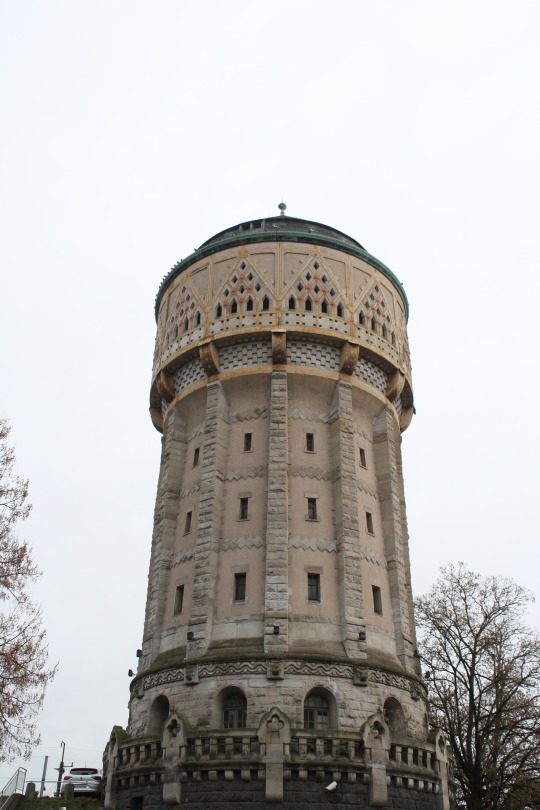
La gare en elle-même est tout à fait remarquable de part son architecture néo-roman rhénan.
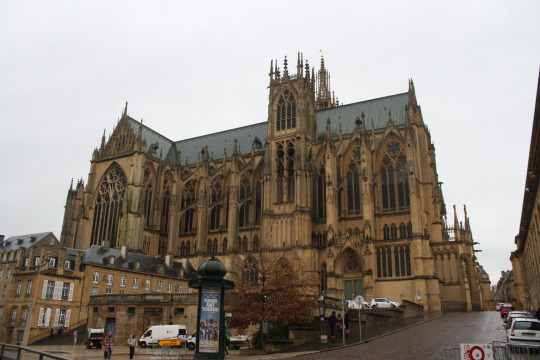
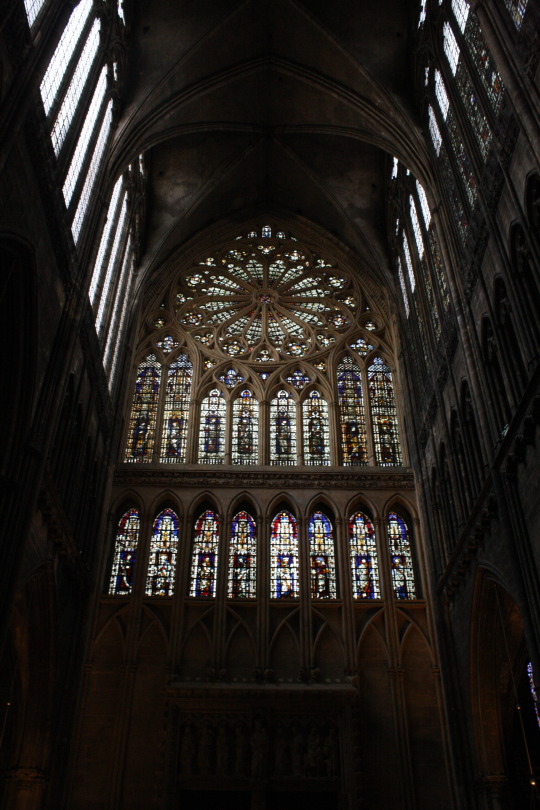



Amateurs de marchés de Noël, vous serez servi ! Car il y a en effet plusieurs marchés dispersés dans toute la ville. Vous en trouverez un sur l'incontournable place Saint-Louis, à l'architecture médiévale et ses galeries couvertes d'une soixantaine d'arcades. Un autre Place Saint-Jacques, et un autre sur la place d'Armes, entre la Cathédrale Saint- Etienne et l'hôtel de ville.
Juste à côté, prenez le temps de visiter les halles couvertes, avant de vous perdre dans les ruelles qui bordent la cathédrale.

Vous arriverez peut-être Place Jeanne d'Arc devant l'église Sainte-Ségolène de style gothique.




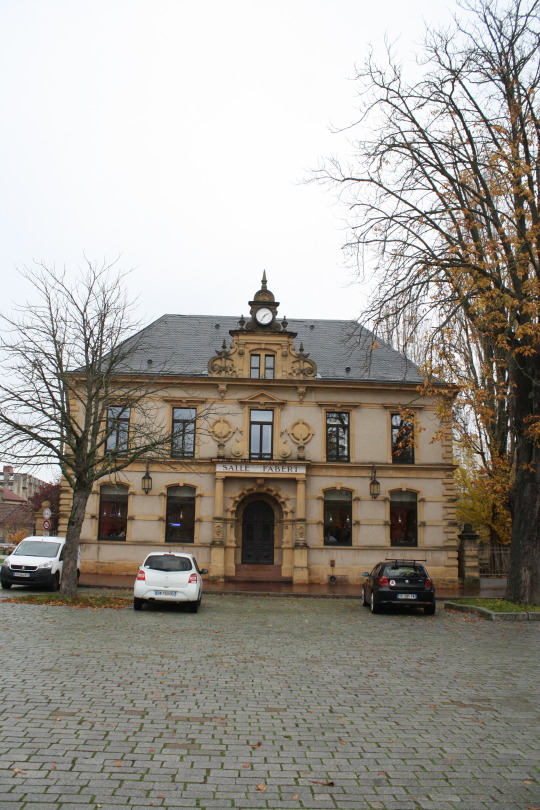

Allez faire un tour sur l'île du Petit Saulcy et perdez-vous dans ses petites rues. Tout au sud de l'île, vous trouverez l'opéra et le Temple Neuf, temple protestant dans un style néo-roman.

De l'autre côté de la rive, vous trouverez aussi la Basilique Saint-Vincent et sa façade classique.


Enfin, direction la porte des allemands. Construite au XIIIe siècle, la porte des Allemands est un symbole du passé médiéval de Metz.


Amateurs d'art, il faut passer par l'incontournable Centre Pompidou-Metz, designé par l'architecte Shigeru Ban. Sa charpente en forme de chapeau chinois saura vous séduire (si la programmation du musée de le fait pas). À ne pas manquer également: le Fond Régional d'Art Contemporain de Lorraine et le musée de la cour d'Or.
Mon avis
N'y allez pas un jour de pluie. Les pierres jaunes, typiques de la région, affadissent la ville. Je n'y ai pas trouvé beaucoup d'attrait ... En revanche, en terme d'art contemporain, on est servis.
2 notes
·
View notes
Text








2023/04/30 Más detalles arquitectónicos en los muros de la catedral. Muy cerca de ella están los restos del castillo medieval, que domina desde lo alto toda la ciudad.
More architectural details on the walls of the cathedral. Very close to it are the remains of the medieval castle, which dominates the entire city from above.
Google Translation into French: Plus de détails architecturaux sur les murs de la cathédrale. Tout près se trouvent les vestiges du château médiéval, qui domine toute la ville d'en haut.
Google translation into Italian: Altri dettagli architettonici sulle pareti della cattedrale. Nelle vicinanze si trovano i resti del castello medievale, che domina dall'alto tutto il paese.
Google Translation into Portuguese: Mais detalhes arquitetônicos nas paredes da catedral. Perto estão os restos do castelo medieval, que domina toda a cidade de cima.
Google Translation into German: Weitere architektonische Details an den Wänden der Kathedrale. In der Nähe befinden sich die Überreste der mittelalterlichen Burg, die die ganze Stadt von oben dominiert.
Google Translation into Albanisch: Më shumë detaje arkitekturore në muret e katedrales. Aty pranë gjenden mbetjet e kështjellës mesjetare që dominon të gjithë qytetin nga lart.
Google Translation into Armenian: Ավելի շատ ճարտարապետական մանրամասներ տաճարի պատերին. Մոտակայքում են գտնվում միջնադարյան ամրոցի մնացորդները, որը վերևից տիրում է ամբողջ քաղաքին։
Google Translation into Bulgarian: Още архитектурни детайли по стените на катедралата. Наблизо са останките от средновековния замък, който доминира над целия град от високо.
Google Translation into Czech: Další architektonické detaily na stěnách katedrály. Nedaleko se nachází zbytky středověkého hradu, který z výšky dominuje celému městu.
Google Translation into Croatian: Više arhitektonskih detalja na zidovima katedrale. U blizini se nalaze ostaci srednjovjekovnog dvorca koji odozgo dominira cijelim gradom.
Google Translation into Danish Flere arkitektoniske detaljer på katedralens vægge. I nærheden ligger resterne af middelalderborgen, der dominerer hele byen fra oven.
Google Translation into Slovak: Viac architektonických detailov na stenách katedrály. Neďaleko sa nachádzajú zvyšky stredovekého hradu, ktorý z výšky dominuje celému mestu.
Google Translation into Slovenian: Več arhitekturnih detajlov na stenah katedrale. V bližini so ostanki srednjeveškega gradu, ki od zgoraj obvladuje celotno mesto.
Google Translation into Estonian: Veel arhitektuurseid detaile katedraali seintel. Lähedal asuvad keskaegse lossi jäänused, mis domineerivad ülevalt kogu linna peal.
Google Translation into Suomi: Lisää arkkitehtonisia yksityiskohtia katedraalin seinillä. Lähistöllä on jäännökset keskiaikaisesta linnasta, joka hallitsee koko kaupunkia ylhäältäpäin.
Google Translation into Georgian: მეტი არქიტექტურული დეტალები ტაძრის კედლებზე. ახლოს არის შუა საუკუნეების ციხის ნაშთები, რომელიც დომინირებს მთელ ქალაქს ზემოდან.
Google Translation into Greek: Περισσότερες αρχιτεκτονικές λεπτομέρειες στους τοίχους του καθεδρικού ναού. Σε κοντινή απόσταση βρίσκονται τα απομεινάρια του μεσαιωνικού κάστρου που δεσπόζει σε όλη την πόλη από ψηλά.
Google Translation into Dutch: Meer architectonische details op de muren van de kathedraal. Vlakbij zijn de overblijfselen van het middeleeuwse kasteel dat de hele stad van bovenaf domineert.
Google Translation into Norwegian: Flere arkitektoniske detaljer på katedralens vegger. I nærheten ligger restene av middelalderslottet som dominerer hele byen ovenfra.
Google Translation into Polish: Więcej detali architektonicznych na ścianach katedry. W pobliżu znajdują się pozostałości średniowiecznego zamku, który góruje nad całym miastem z góry.
Google Translation into Romanian: Mai multe detalii arhitecturale pe pereții catedralei. În apropiere se află rămășițele castelului medieval care domină de sus întregul oraș.
Google Translation into Russian: Больше архитектурных деталей на стенах собора. Рядом находятся остатки средневекового замка, возвышающегося над всем городом сверху.
Google Translation into Serbian: Више архитектонских детаља на зидовима катедрале. У близини се налазе остаци средњовековног замка који одозго доминира целим градом.
Google Translation into Swedish: Fler arkitektoniska detaljer på väggarna i katedralen. I närheten finns resterna av det medeltida slottet som dominerar hela staden från ovan.
Google Translation into Turkish: Katedralin duvarlarında daha fazla mimari detay. Yakınlarda, tüm şehre yukarıdan hakim olan ortaçağ kalesinin kalıntıları vardır.
Google Translation into Ukrainian: Більше архітектурних деталей на стінах собору. Поруч знаходяться залишки середньовічного замку, який домінує над усім містом зверху.
Google Translation into Arabic: مزيد من التفاصيل المعمارية على جدران الكاتدرائية. في مكان قريب توجد بقايا قلعة القرون الوسطى التي تهيمن على المدينة بأكملها من الأعلى.
Google Translation into Bengali: ক্যাথেড্রালের দেয়ালে আরও স্থাপত্যের বিবরণ। কাছাকাছি মধ্যযুগীয় দুর্গের অবশিষ্টাংশ রয়েছে যা উপরে থেকে পুরো শহরকে আধিপত্য করে।
Google Translation into Simplified Chinese: 大教堂墙壁上的更多建筑细节。 附近是中世纪城堡的遗迹,从上面俯瞰整个城镇。
Google Translation into Korean: 대성당 벽에 대한 더 많은 건축 세부 사항. 근처에는 위에서 도시 전체를 지배하는 중세 성의 유적이 있습니다.
Google Translation into Hebrew: פרטים אדריכליים נוספים על קירות הקתדרלה. בסמוך נמצאים שרידי הטירה מימי הביניים השולטת על כל העיירה מלמעלה.
Google Translation into Hindi: कैथेड्रल की दीवारों पर अधिक वास्तुशिल्प विवरण। पास में मध्यकालीन महल के अवशेष हैं जो ऊपर से पूरे शहर पर हावी हैं।
Google Translation into Indonesian: Lebih detail arsitektur di dinding katedral. Di dekatnya terdapat sisa-sisa kastil abad pertengahan yang mendominasi seluruh kota dari atas.
Google Translation into Japanese: 大聖堂の壁の建築の詳細。 近くには、町全体を上から見下ろす中世の城の遺跡があります。
Google Translation into Kyrgyz: Собордун дубалдарында дагы архитектуралык деталдар. Жакын жерде жогорудан бүт шаарга үстөмдүк кылган орто кылымдык сепилдин калдыктары бар.
Google Translation into Malay: Lebih banyak butiran seni bina pada dinding katedral. Berdekatan adalah tinggalan istana zaman pertengahan yang menguasai seluruh bandar dari atas.
Google Translation into Mongolian: Сүмийн ханан дээрх архитектурын дэлгэрэнгүй мэдээлэл. Ойролцоох нь дээрээсээ хотыг бүхэлд нь давамгайлж байсан дундад зууны үеийн цайзын үлдэгдэл юм.
Google Translation into Nepali: कैथेड्रल को पर्खाल मा अधिक वास्तु विवरण। नजिकै मध्ययुगीन महलका अवशेषहरू छन् जसले माथिबाट सम्पूर्ण शहरलाई हावी गर्दछ।
Google Translation into Panjabi: ਗਿਰਜਾਘਰ ਦੀਆਂ ਕੰਧਾਂ 'ਤੇ ਹੋਰ ਆਰਕੀਟੈਕਚਰਲ ਵੇਰਵੇ। ਨੇੜੇ ਹੀ ਮੱਧਯੁਗੀ ਕਿਲ੍ਹੇ ਦੇ ਅ��ਸ਼ੇਸ਼ ਹਨ ਜੋ ਉੱਪਰੋਂ ਪੂਰੇ ਸ਼ਹਿਰ ਉੱਤੇ ਹਾਵੀ ਹਨ।
Google Translation into Pashtun: د کاتډرل په دیوالونو کې نور معماري توضیحات. نږدې د مینځنۍ پیړۍ کلا پاتې دي چې له پورته څخه په ټول ښار واکمني کوي.
Google Translation into Persian: جزئیات بیشتر معماری روی دیوارهای کلیسای جامع. در همان نزدیکی بقایای قلعه قرون وسطایی وجود دارد که از بالا بر کل شهر تسلط دارد.
Google Translation into Sundanese: Langkung rinci arsitéktur dina témbok katedral. Di deukeutna aya sésa-sésa kastil abad pertengahan anu ngadominasi sakumna kota ti luhur.
Google Translation into Tagalog: Higit pang mga detalye ng arkitektura sa mga dingding ng katedral. Sa malapit ay ang mga labi ng medieval castle na nangingibabaw sa buong bayan mula sa itaas.
Google Translation into Thai: รายละเอียดทางสถาปัตยกรรมเพิ่มเติมบนผนังของอาสนวิหาร บริเวณใกล้เคียงเป็นซากปราสาทยุคกลางที่ครองทั้งเมืองจากด้านบน
Google Translation into Urdu: کیتھیڈرل کی دیواروں پر مزید تعمیراتی تفصیلات۔ قرون وسطی کے قلعے کی باقیات قریب ہی ہیں جو اوپر سے پورے شہر پر حاوی ہے۔
Google Translation into Uzbek: Soborning devorlarida ko'proq me'moriy tafsilotlar. Yaqin atrofda yuqoridan butun shaharda hukmronlik qiladigan o'rta asr qal'asi qoldiqlari joylashgan.
Google Translation into Vietnamese: Nhiều chi tiết kiến trúc trên các bức tường của thánh đường. Gần đó là phần còn lại của lâu đài thời trung cổ thống trị toàn bộ thị trấn từ trên cao.
#Tavira#Algarve#Portugal#Architecture#Church#Cathedral#Details#Deco#Watch#Medieval#Gothic#Castle#Flowers#PolloNegroSkyWalker#TravelBlogger#Wanderlust#CoupleGoals#GoodVibes#Plushies#instaGood#Maharashtra#ペンギン
5 notes
·
View notes